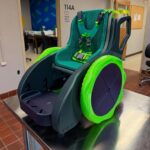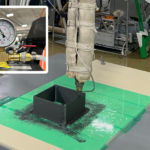Caltech researchers have devised biohybrid robotic jellyfish, equipped with electronic enhancements and prosthetic attachments. These additions, including streamlined 3D printed forebodies and swimming pacemakers, propel the robots to swim up to 4.5 times faster than natural jellyfish, even while carrying payloads, at a mere $20 production cost.

The prosthetic “hat” not only facilitates payload transportation but also optimizes swimming efficiency. This innovation opens avenues for studying oceanic processes in controlled laboratory settings, such as the vertical tank developed by Caltech. This tank simulates ocean currents, enabling researchers to observe and analyze jellyfish behavior akin to swimming against the flow, akin to a treadmill for aquatic creatures.
“In the ocean, the round trip from the surface down to several thousand meters will take a few days for the jellyfish, so we wanted to develop a facility to study that process in the lab,” said John Dabiri, Centennial Professor of Aeronautics and Mechanical Engineering at Caltech.
“Our vertical tank lets the animals swim against a flowing vertical current, like a treadmill for swimmers. We expect the unique scale of the facility—probably the first vertical water treadmill of its kind—to be useful for a variety of other basic and applied research questions.”
The development of these biohybrid robotic jellyfish represents a significant advancement in underwater robotics, blending biological principles with engineering prowess to surpass the natural capabilities of jellyfish. The project holds promise for diverse applications in marine research, environmental monitoring, and underwater exploration, heralding a new era of biomimetic robotics in aquatic environments.
Come and let us know your thoughts on our Facebook, X, and LinkedIn pages, and don’t forget to sign up for our weekly additive manufacturing newsletter to get all the latest stories delivered right to your inbox.









